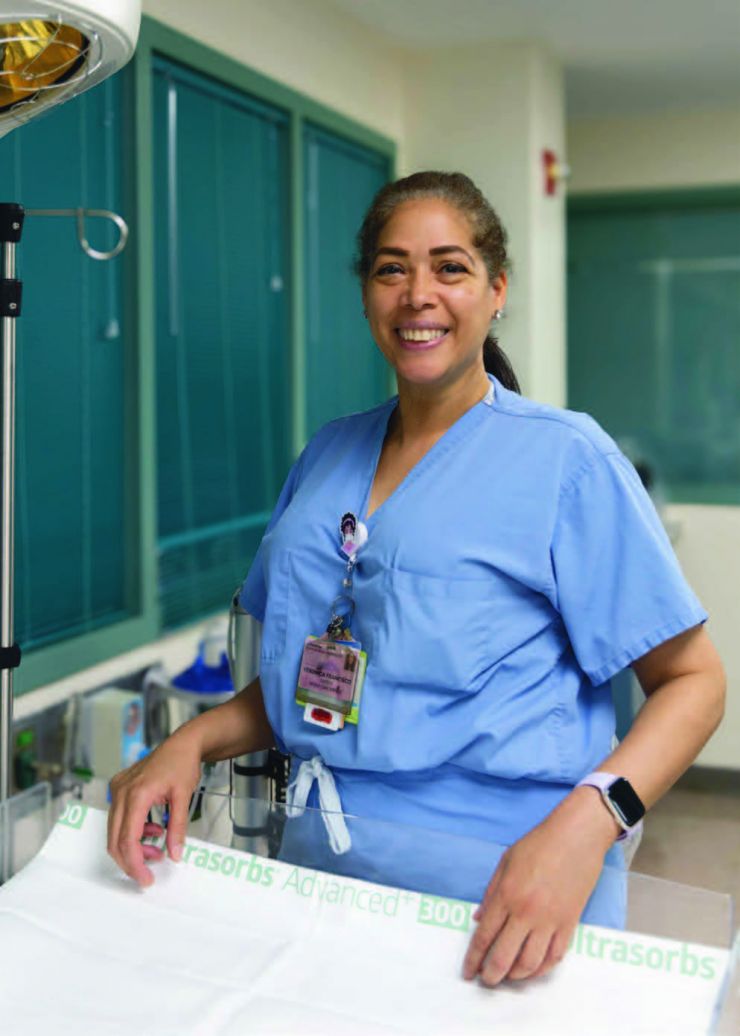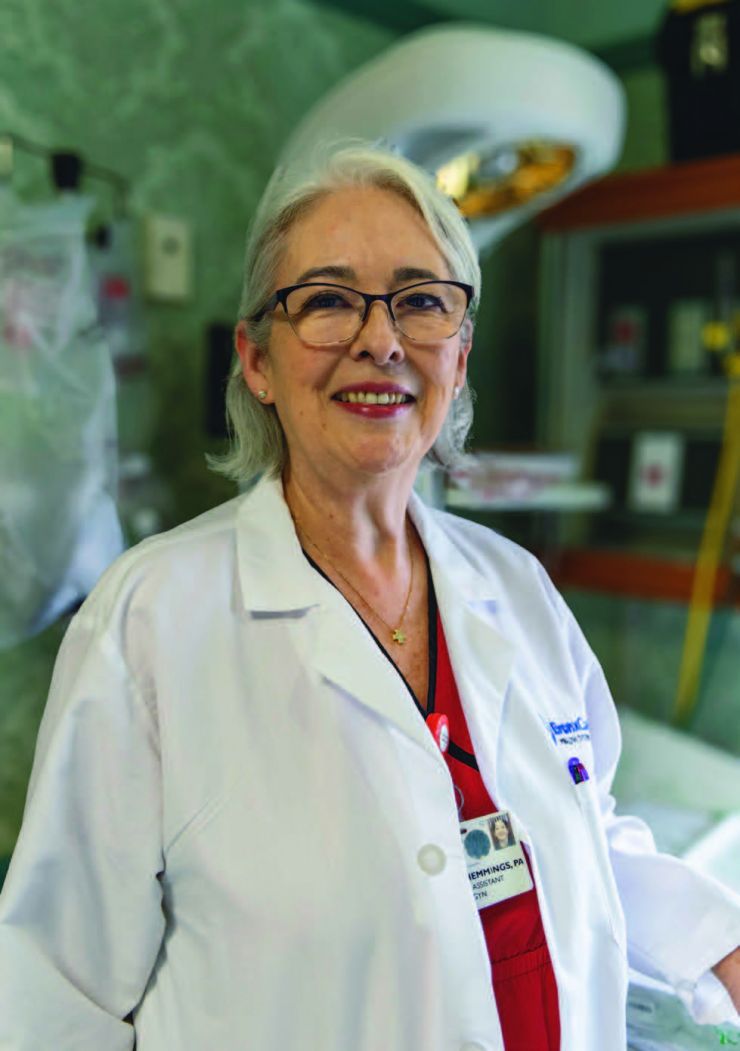Birth Equity
October 22, 2024
How members in the Bronx are ensuring better outcomes for mothers and babies.

The Biden-Harris administration’s initiatives included funding streams to increase the number of physicians, licensed midwives, doulas, and community health workers in underserved communities as well as a “Birthing-Friendly” designation for hospitals to help families identify high-quality maternity care. Vice President Harris also made sure that the administration set minimum standards—including staffing standards—for obstetric care and extended Medicaid coverage for a year after childbirth in almost every state.
BronxCare Health System, where many 1199 members work, has been awarded the Birthing-Friendly designation in part for its commitment to overcoming health disparities. This work is particularly urgent because women in the Bronx have the worst maternal health outcomes in New York City, according to the latest statistics.
Speaking to families in their native language helps them feel comfortable seeking early pre-natal care, explained Dr. Suneel Parikh, Director of the Health Equity program at BronxCare. “We can speak to patients in English, Spanish, Arabic, French and Bengali—the five most common languages of the communities we serve,” she says.
The hospital also has an open access policy, meaning that if an appointment is missed, patients can come back at their own convenience. “We recognize that people often have childcare responsibilities and transportation issues that can make it difficult to reach the hospital,” adds Dr Parikh.
This policy helps families to feel comfortable enough to seek consistent prenatal care, so that risk factors for complications like high blood pressure, diabetes, asthma and obesity can be identified early and treated. Decreasing the number of C-sections for women whose babies are presenting with their heads facing downwards and are at low risk of complications, is another key strategy designed to improve outcomes. Since 2021, BronxCare has seen a measurable improvement, with their rate of C-sections for head-first babies down by 2 per cent and continuing to decrease.

Recognizing that some new mothers in the South Bronx will struggle to pay for essentials like baby formula, clothing, diapers and car seats, she said the hospital works with community organizations who often bring in donated supplies onto the wards.
In the delivery room, Veronica Francisco is another 1199 Spanish speaker who has been working as an OB Technician for 11 years. “Sometimes when you are surrounded by doctors it can be confusing,” says Francisco, “I make sure the mothers understand what is going on.”
Every morning, she takes part in a “group huddle” where all the OB staff gather to discuss each patient and head off any possible problems. They try to promote natural birth, when it can be done safely, because there is less chance of infection and other complications.
“Almost all of the patients we see in Obstetrics have already been seen by a midwife in the Women’s Health Center for monthly prenatal appointments,” says Francisco.
In a hospital setting, it is inevitable that things do occasionally go wrong. Francisco recalls being in the room when an emergency hysterectomy had to be performed on a young woman. “She bled so much, and she was in intensive care for several days,” recalls Francisco. “Two weeks later she came back upstairs to show us her baby. I tear up just thinking about it. She was so ill, but we saved her—in part thanks to the dedication of the team here.
“There are no words and no money that will satisfy you more than seeing that person who you were able to save.”

